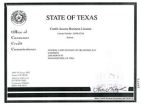Getting By With a Single Parent Family Budget
Raising kids alone isn’t easy—but it can be done. Whether you’re widowed, divorced, or raising children alone for other reasons, you can get your finances on track with a single parent family budget.
Going from two incomes to one can be a shock to the system. Perhaps your significant other was the one who always worked. Whatever your personal circumstances, having a child in tow as you sort things out can be daunting—and there can be many financial stresses. But keep your chin up—you can get on top of things and work toward financial health. Below are some tips that will help you get started.
Create a Budget and Stick to It
If your significant other was the one who took care of finances, then you may find yourself feeling overwhelmed as you begin tackling the task yourself. The most important thing you can do is take honest stock of your finances and expenses and create a realistic budget. Make a list of all your bills, calculate how much they are, and know when they are due each month. After that, list your income and figure out which bills need to be paid with which paycheck. If you get paid twice a month, for instance, then divide your bills into two sections—one for each paycheck.
List your first-of-the-month bills under your first paycheck and your end-of-the-month bills under your second paycheck, allotting middle-of-the-month bills to whichever check can most comfortably pay them. Figure out how much money you’ll have left over from each paycheck once its designated bills are taken care of, and then budget that money to cover necessities.
Discipline yourself to set money aside for things that are coming up, like birthdays and back-to-school expenses, so you aren’t scrambling to come up with funds at the last minute (causing credit card spending).
Trim the Fat
If you take an honest look at your expenses, then there will almost always be things you don’t really need or can cut down on. Do you have a daily habit of making a Starbucks run on your way to work, for instance? Dropping $4-$6 on a specialty coffee five days a week can add up fast; before you know it, you’ve spent over $100 in one month on coffee alone and more than $1,200 in a year! Instead, get yourself a reusable travel coffee mug and make your own java each morning before running out the door. Bam! You’ve just saved yourself a lot of money.
This same strategy can be applied across the board in the financial areas of your life. Take honest inventory of what you’re spending money on and cut out the unnecessities or find a less-expensive solution.
Save Something
Even if you can’t save much, put something aside each time you get paid. Make a goal to take 10 percent out of each paycheck, if you can, and put it into a savings account. If you can’t afford to save quite that much, figure out how much you reasonably can save, and then make yourself stick to that amount. It’s essential to have a financial cushion, and you’ll be amazed at how quickly the money adds up. One thing is certain: If you don’t set the money aside, you will spend it.
